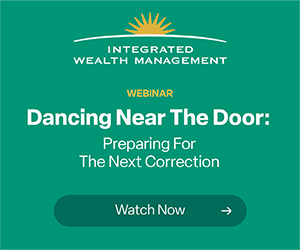Asset protection
Have you ever considered investing in alternative investments such as real estate, private lending or commodities? Watch this video from Andrew Ruhland at Integrated Wealth Management to see what he recommends.

As Amazon “aggressively recruited Chinese manufacturers and merchants” to sell to US consumers, its China team “saw increasing patterns of fraud, counterfeits and unsafe products.” But consumers have no clue where the sellers are and where the products came from.
Everybody who buys enough on Amazon has noticed this: Buyer beware!
You get a mix of Amazon’s own merchandise and the third-party market place, which accounts for over half of Amazon’s physical gross merchandise sales. You’re surrounded by good merchandise, fakes, and dangerous products made overseas. There are legit sellers, legit manufacturers, and dubious sellers and manufacturers. You don’t know who or where the seller or manufacturer is because they don’t have to disclose it, including many sellers in China. It’s all there, the good, the bad, and the ugly, and buyers have to sort it out on their own. Even many of the product reviews are fake.
We’ve had good experiences too: We bought a set of cotton sheets via the Amazon platform from the manufacturer in India. Because it cut out all the middlemen, except the Amazon platform, the price was a fraction of the price of similar-quality sheets – also made in India – at a big-name US department store. And we got it a couple of days after ordering it. That’s one end of the spectrum…CLICK for complete article

The media is full of articles about the financial situation of Millennials in today’s economy. According to numerous surveys, they are saddled with too much debt, can’t secure higher wage-paying jobs, and are financially distressed on many fronts. Moreover, this is occurring during the longest financial and economic boom in the history of the United States.
Of course, the media is always there to help by chastising boot-strapped Millennials to dump their savings into the financial markets to chase overvalued, extended, and financially questionable stocks.
To wit:
“Only about half of American families are participating in some way in the stock market, according to research from the St. Louis Fed. When it comes to millennials (ages 23 to 38), about 60% have no direct or indirect exposure to the stock market.
Of course, you don’t definitely don’t have to invest, Erin Lowry, author of ‘Broke Millennial Takes on Investing,’ tells CNBC Make It. It’s not a life requirement. But you should understand what you’re losing out on if you avoid the markets. It’s a shocking amount, Lowry says. ‘You’re going to have to save so much more money to achieve the same goals because the market is helping do some of the work.’”
Great, you have a person with NO financial experience advising Millennials to put their “savings” into the single most difficult game on the planet….CLICK for complete article

Capital One has replaced its cybersecurity chief, four months after the company disclosed a massive data breach involving the theft of sensitive data on more than 100 million customers.
A spokesperson for Capital One confirmed the news in an email to TechCrunch.
“Michael Johnson is moving from his role as chief information security officer to serve as senior vice president and special advisor dedicated to cyber security,” said the spokesperson.
Mike Eason, who served as chief information officer for the company’s commercial banking division, has replaced Johnson as interim cybersecurity chief while a permanent replacement is found….CLICK for complete article

Willis Towers Watson’s Thinking Ahead Institute (TAI) recently revealed what it considers the 15-extreme risks facing investors for 2019, as well as for the years ahead. The risks run the gamut from climate change to nuclear contamination.
TAI’s research suggests, broadly, there are three hedging strategies available to institutions:
- Hold cash. Over long historical periods cash has held its real value through both episodes of deflation and inflation but there is no guarantee that this will be the case in the future.
- Derivatives. It is worth mentioning that cost and usefulness are often in opposition. The cost of derivatives protection can often be reduced by specifying more precise conditions – but the more precise the conditions, the greater the chance that they are not exactly met and hence the ‘insurance’ does not pay out.
- Hold a negatively-correlated asset. There is no single asset that will work against all possible bad outcomes. Further, there is no guarantee that the expected performance of the hedge asset will actually transpire in the future event.
While we have regularly discussed the“value of holding cash,” and “hedging” within portfolios, for most investors there are only a limited number of options available. The problem becomes magnified by the lack of capital, and a disciplined investment strategy, to delve into and manage more complex risk mitigation strategies. Therefore, investors are simply told to “buy and hold,” and hope for the best.
Since institutions are actively hedging capital risk, it should be clear “buy and hold” strategies do not. However, there are actions you can take to navigate not only short-term market risk, but also long-term fundamental, economic, and environmental risks…CLICK for complete article












